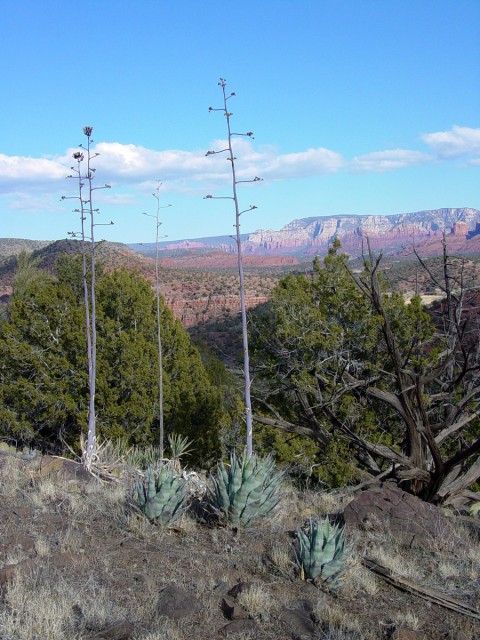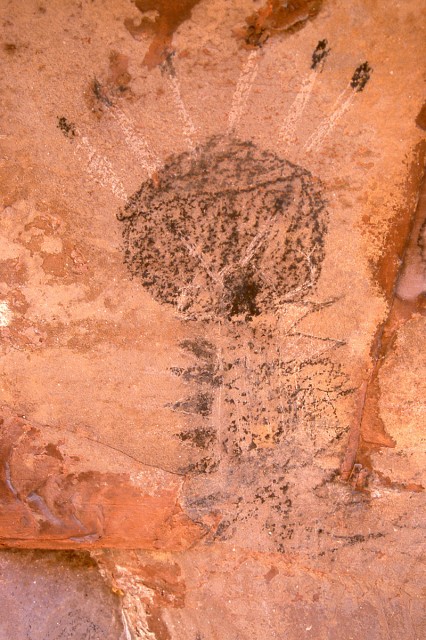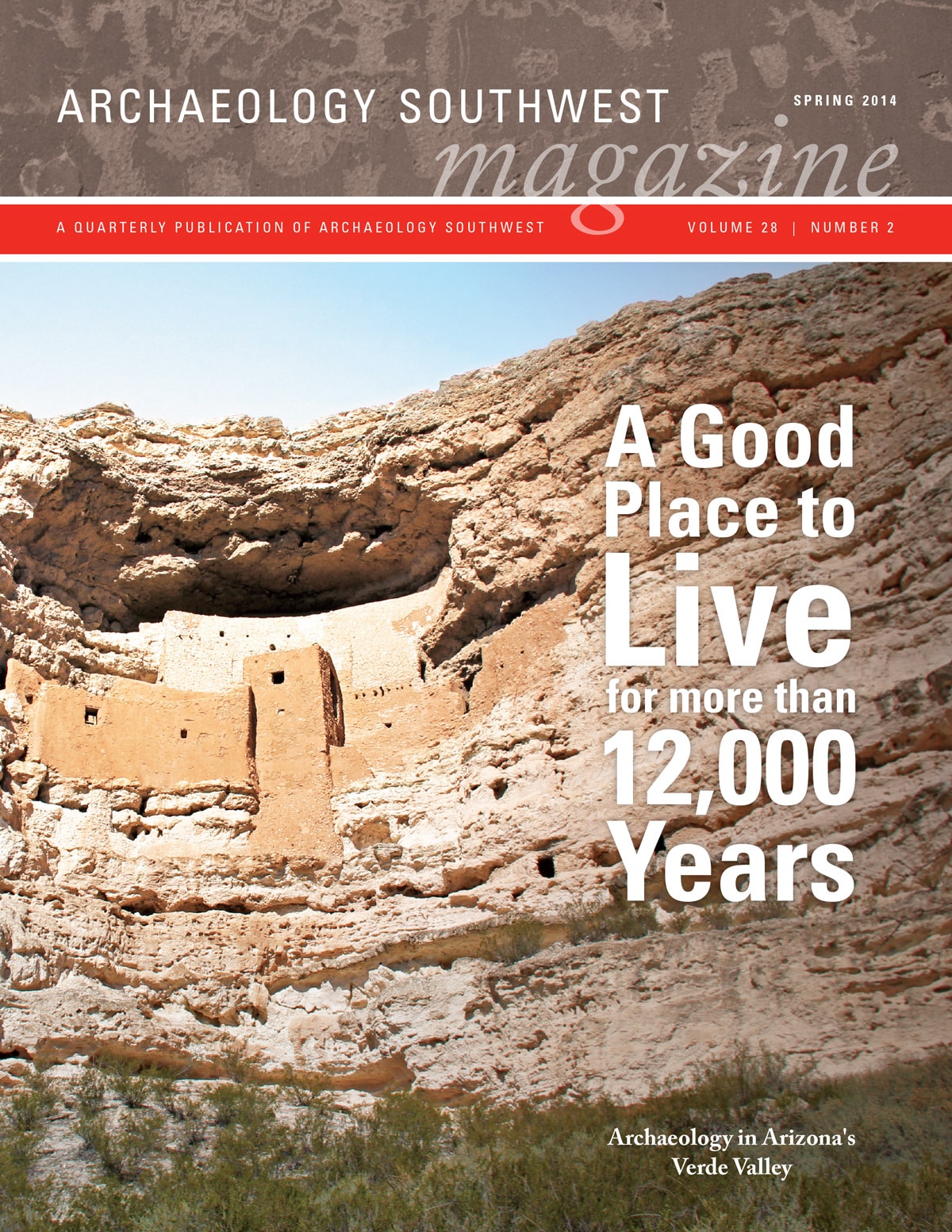A Good Place to Live for More Than 12,000 Years
Archaeology Southwest Magazine Vol. 28, No. 2
Issue editor: Todd W. Bostwick, Verde Valley Archaeology Center
Today, people relocate to Sedona and Oak Creek for the breathtaking views and agreeable climate. But archaeology shows us that, because of its reliable water supply and varied ecology, central Arizona’s Verde Valley has drawn residents for more than 120 centuries. Researchers have found numerous projectile points of Paleoindians and Archaic hunter-gatherers, and the sites of agriculturalists identified as the Southern Sinagua (ca. A.D. 600–1425) are scattered throughout the region. Hohokam cultural materials are also present in lowland sites dating between 800 and 1125, indicating that groups from southern Arizona moved into the Verde Valley and coexisted with the Sinagua, or that some Sinagua groups adopted Hohokam practices. Yavapai and Apache groups have lived in the region for many centuries, and the Hopi maintain close ties to this culturally diverse landscape. Contributors to this issue of Archaeology Southwest Magazine provide a closer look at archaeology in Arizona’s Verde Valley.
Links of interest related to each article are listed below. Readings of interest are here (opens as a PDF).
Visit the YouTube channel of the Verde Valley Archaeology Center to view presentations about archaeology in the region and presentations by several of the authors in this issue.
A Good Place to Live for More Than 12,000 Years: Archaeology in Arizona’s Verde Valley — Todd W. Bostwick
The Sinagua Circle, a self-guided tour developed by the Verde Valley Archaeology Center
Montezuma Castle National Monument
Tuzigoot National Monument
Palatki Heritage Site
Honanki Heritage Site
V-Bar-V Heritage Site
The Archaeological Conservancy
Harold S. Colton (image)
Pioneering Late Nineteenth-Century Archaeologists in the Verde Valley — Steven R. James and Peter J. Pilles Jr.
Arizona Territory
The Fort Whipple Museum is operated by the Sharlot Hall Museum in Prescott, AZ.
Fort Verde State Historic Park
Dr. Edward Palmer. Note that recent research suggests that Palmer was born in 1829.
Dr. Edgar Alexander Mearns
Cosmos Mindeleff
Dr. Jesse Walter Fewkes (opens as a PDF)
Elden Pueblo
Verde Valley Pit Structures: Variations through Time — Stewart Deats
The Mindeleff Cavate Site — Susan D. Hall
Hall, Susan D.
1992 An Architectural Analysis of Cavate Dwellings in the Verde Valley, Arizona. Master’s thesis. Department of Anthropology, Northern Arizona University, Flagstaff. University Microfilms International, Ann Arbor, Michigan.
Mindeleff, Cosmos
1896 Aboriginal Remains in Verde Valley, Arizona. In 13th Annual Report of the Bureau of American Ethnology, pp. 179–261. Government Printing Office, Washington, D.C.
Sinagua Farming Methods Revealed — Jerome P. Ehrhardt
Verde Valley Chapter of the Arizona Archaeological Society
In Brief: The Camp Verde Meteorite — Kenneth J. Zoll
The Canyon Diablo (Camp Verde) meteorite is curated at the Center for Meteorite Studies at Arizona State University.
From the Handbook of Iron Meteorites (opens as a PDF; entry begins at top right)
The Tale of a Falling Star — article in the Verde Independent; note that the find date of 1927 given in the article does not match records at ASU, which date the find to 1915.

Agave delamateri (Tonto Basin agave) near Sedona, Arizona. This is one of four species new to science that researchers believe are ancient domesticates. There is evidence that Verde Valley inhabitants traded this species to residents of the Tonto Basin in the distant past. Photo: © Wendy C. Hodgson.
In Brief: Living Artifacts in the Verde Valley — Wendy C. Hodgson and Andrew M. Salywon
Desert Botanical Garden, Research
The Verde Salt Mine — Todd W. Bostwick and Nancy Jo Chabot
American Museum of Natural History, Collections
Arizona State Museum, Collections
Museum of Northern Arizona, Collections
Southern Sinagua Sunwatching Methods in the Verde Valley — Kenneth J. Zoll
Palatki Heritage Site
Honanki Heritage Site
Ancient Rock Art of the Verde Valley — Peter J. Pilles Jr.
In 2000, Pilles and the Coconino National Forest received a Conservation and Preservation Award from the American Rock Art Research Association.

Skatakaamcha, the major supernatural being in Yavapai creation stories. In this pictograph, he is just over two feet tall. Photo: © Peter J. Pilles Jr.
Verde Valley Archaeology in Macroregional Context — David R. Wilcox
A Delicate Balance — Matthew C. Guebard
Montezuma Castle National Monument
Tuzigoot National Monument
Read about LiDAR at the website of the U.S. Geological Survey (USGS)
The Verde Valley Archaeology Center — James Graceffa and Todd W. Bostwick
VVAC website
VVAC Museum Collections Policy
The Future of Verde Valley Archaeology — Peter J. Pilles Jr.
tDAR — The Digital Archaeological Record
Back Sight — William H. Doelle
Archaeology Southwest Magazine Vol. 23, No. 1 — The Latest Research on the Earliest Farmers (opens as a PDF)
Subscribe


